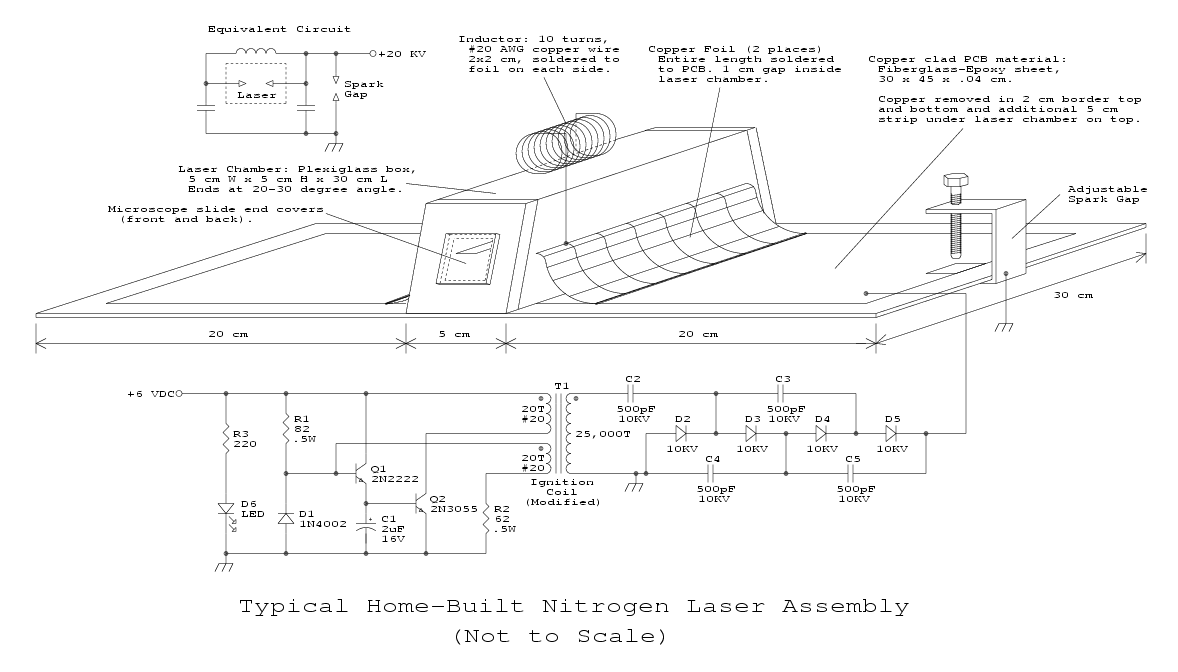Some more theroy:
Electron degeneracy pressure is given by the formula,
P = h^2 /(20 me * mp^(5/3)) * (3/pi)^(2/3) * (Rho/mue)^(5/3)
Where:
...
The terms are defined by several different experts to be found on the Internet using Google, search on "Electron degeneracy pressure". One such source is
http://en.wikipedia.org/wiki/Electron_d ... y_pressure
My trouble is that the definition of the terms is beyond me. Sure, I could assume that they are simply the everyday terms that we use here at talk-polywell but the papers I find are written by Astrophysicsts and I get the strong feeling that they are using different definitions than the common place ones.
I went further and found a U-tube video showing a sustained arc through Helium gas where nothing spectacular happened. Seeing that I stopped my investigation. Prematurely, perhaps. Russ' observation that arc's with short time duration give more result than with long time duration makes me realize that the electrom degeneracy pressure equation describes pressure at steady state and a continuous arc through the gas causes electrons to enter and leave the container at the same rate. The electron density within the gas only increases during the very short time duration that the arc is being struck. Afterwards the electron density doesn't increase. That implys to me that an extremely high current with very short duration would give the most spectacular results.
How long does it take the arc to reach steady state once it is struck? Not very long I think.
Noble Plasma Engine
We are interested in Pulsed power. Pulse power is the science and technology of accumulating energy over a relatively long period of time and releasing it very quickly, thus increasing the instantaneous power.
Steady accumulation of energy followed by its rapid release can result in the delivery of a larger amount of instantaneous power over a shorter period of time (although the total energy is the same).
For example, if one joule of energy is stored within a capacitor and then evenly released to a load over one second, the peak power delivered to the load would only be 1 watt.
However, if all of the stored energy were released within one microsecond, the peak power would be one megawatt, a million times greater.
I am interested in using those 1000 joules of power stored in Russ’s capacitors and releasing it in 10 nanoseconds.
This will produce 100,000,000,000 watts (100,000 megawatts) of peak power.
This release of pulse power will produce a healthy shockwave in the hydrogen plasma.
Steady accumulation of energy followed by its rapid release can result in the delivery of a larger amount of instantaneous power over a shorter period of time (although the total energy is the same).
For example, if one joule of energy is stored within a capacitor and then evenly released to a load over one second, the peak power delivered to the load would only be 1 watt.
However, if all of the stored energy were released within one microsecond, the peak power would be one megawatt, a million times greater.
I am interested in using those 1000 joules of power stored in Russ’s capacitors and releasing it in 10 nanoseconds.
This will produce 100,000,000,000 watts (100,000 megawatts) of peak power.
This release of pulse power will produce a healthy shockwave in the hydrogen plasma.
Blumlein spark gaps are typically used in amateur, nitrogen gas, UV pulse lasers, because they can produce rapid arcs across linear electrodes.
(Do not attempt to build this laser without eye and HV protection!)
http://www.repairfaq.org/sam/n21asm.gif

In addition, if shock waves are impulsively driving a piston, maybe they can be focused for effect using an appropriately-shaped reflecting chamber. Prolate ellipsoid for a cylindrical piston, but in that case the spark gap extent has to be small to be near a focus.
An elliptical cylinder reflector for a linear piston.
Shock waves tend towards nonlinear behavior, so tweaking the reflector shape away from the nominal curve might be necessary.
(Do not attempt to build this laser without eye and HV protection!)
http://www.repairfaq.org/sam/n21asm.gif

In addition, if shock waves are impulsively driving a piston, maybe they can be focused for effect using an appropriately-shaped reflecting chamber. Prolate ellipsoid for a cylindrical piston, but in that case the spark gap extent has to be small to be near a focus.
An elliptical cylinder reflector for a linear piston.
Shock waves tend towards nonlinear behavior, so tweaking the reflector shape away from the nominal curve might be necessary.